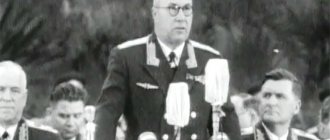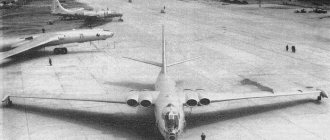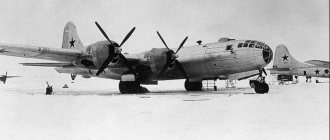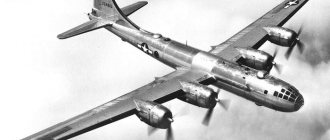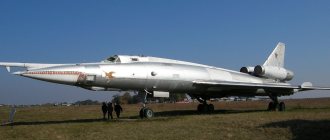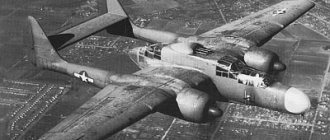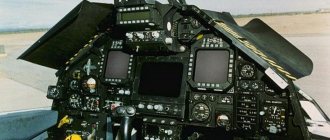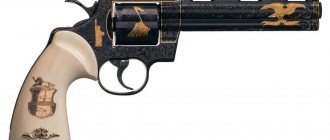In the 1980s, the United States introduced the world's first combat aircraft with low radar signature. One of them was the F-117 “fighter”, which went into battle already in 1991. The second - more famous during development, but adopted even later - is the B-2 Spirit strategic bomber.
However, few people knew that this aircraft, designed according to the “flying wing” design, has deeper roots than it might seem. The company's founder, Jack Northrop, had been building “flying wings” even before the war, and the first heavy jet bomber of the US Air Force could have been just like that.
Background
By the time he founded his own company, Jack Northrop had worked as a designer at Lockheed. He was already the author of several wonderful aircraft, but his dream was the development of “flying wings,” which Northrop saw as the future of aviation.
In 1946, he finally managed to materialize his ideas in the form of the XB-35 heavy bomber. The aircraft aroused great interest among the military, but its piston engines were clearly outdated by this time.
Northrop was asked to convert the plane into a jet, and he completed it in just a year.
The modified XB-47 flew in 1947, and the military began placing orders. And then corruption intervened.
New Secretary of Defense Johnson previously collaborated with. Air Force Secretary Symington was also associated with her. And it so happened that it was the B-36 aircraft - already an archaic 6-engine giant - that was the rival of the “flying wing”. The order issued to Northrop was canceled.
However, at the same time, American admirals, outraged by cuts in the naval budget (while allocating funds for the development of the B-36), demanded a trial. Northrop failed to take advantage of the chance. At the hearing, he was frightened and testified under oath that he did not feel any pressure and did not see anything strange in the cancellation of the order. The history of “flying wings” has stopped.
Stealth Bomber
Decades later, in the 70s, she became one of the first participants in the project to create an aircraft that would be invisible to radar. Although the development of a light attack stealth aircraft was entrusted, it was decided that the developed technologies could also be used in the construction of long-range heavy bombers.
The ATB (Advanced Technology Bomber) program started in 1979.
The project resembled an enlarged F-117. Northrop's designers decided to take advantage of the company's experience in creating "flying wings." In 1981, their project won the competition and was officially given the name B-2 “Spirit”. The first prototype was presented to the public in 1988, and the B-2 made its first flight in the summer of 1989.
During its development, the bomber concept underwent changes. So, initially the aircraft was supposed to be high-altitude, but later the main mode of air defense breakthrough became low-altitude flight.
Disadvantages of invisible
Wide sections of the American military and congressmen are simply deceived in their best expectations. Not all people have knowledge in the field of radio engineering, and even more so in the phenomenon of diffraction of electromagnetic radiation. Lecturers spoke to them with the idea of creating an invisible bomber; scientists vied with each other to promise the creation of such an aircraft today and infected many people with this idea.
But the effectiveness of the idea turns out to be somewhat questionable; the resulting dispersion area of the aircraft remains in the range from 0.0015 to 0.1 m2. This characteristic far exceeds the readings of, for example, a fighter whose ESR is 3-4 m2. At first glance, the dispersion area is in an advantageous range.
But the reduced RCS of a bomber does not become a critical indicator of its invisibility. Scatter reduction is only effective when flying over older air defense systems. Modern modifications of radars are able to discern an aircraft with such a scattering area at a distance of up to ten to twenty kilometers.
The flat shape, lack of vertical lines and tail make it impossible to stay on course, and this requires the installation of expensive electronic controls.
Practical problems with infrared radiation have arisen, despite the concerted efforts of engineers and scientists. They are trying to place the engines on top of the aircraft, changing the outlet openings of the nozzles to accelerate the cooling of burnt fuel products. This gives its results, but it does not provide ideal concealment of the hot jet exhaust.
Eyewitness accounts at various modern exhibitions indicate that through the pupil of a thermal imager the aircraft is very noticeably visible and clearly visible. The enemy can see the device, in which case the B-2 (bomber) is doomed to destruction.
Design
The B-2 “Spirit” bomber is a 4-engine subsonic “tailless” aircraft with a fuselage whose function is performed by a wing center section. In the front part of the center section there is a 2-seat crew cabin, behind it is a compartment with avionics. High automation allowed the aircraft crew to be reduced to 2 pilots. For rest and recuperation, the cabin includes a galley, berth and toilet.
The bomb load is carried in 2 compartments, on rotary launchers or standard bomb racks; external suspension is not provided.
The B-2 can carry up to 80 500-pound Mk.82 bombs (including adjustable versions) or up to 16 2000-pound Mk.84 bombs. Nuclear weapons could include up to 16 B61 or B83 thermonuclear bombs.
The B-2 aircraft is equipped with 4 F188 turbofan engines manufactured by General Electric. They are based on the F100 engines used on the F-14 and F-16 fighters, but lack the afterburner. Every F188 has a 1-stage high-pressure turbine with a 9-stage compressor, and a 2-stage low-pressure turbine with a 3-stage fan.
The bomber's engines are located deep in the body, air is supplied to each pair through S-shaped channels. Some of the air does not enter the engines, but is used to cool the exhaust and thereby reduce the heat signature. Fuel tanks are located in the wings and center section.
The B-2 bomber's electronic equipment complex includes the AN/APQ-181 all-weather radar, satellite and celestial navigation systems. In the early 2000s, the radar was upgraded by installing active phased array antennas.
Control system – fly-by-wire, digital.
This was the only way to completely overcome the instability of the “flying wing.” Low visibility is achieved by a whole range of measures - firstly, the chosen scheme itself ensures a reduction in the scattering area due to the absence of tail rudders and a keel. Secondly, the aforementioned forced cooling of the jet streams is used.
Thirdly, the aircraft is covered with radio-absorbing materials (composites based on carbon and graphite). Finally, the bomber is painted with a special paint that reduces the possibility of its visual detection at distances of about 40 km.
Aircraft modernization
In 2008, America's Congress funds a program to modernize the B-2 (bomber). The control system for defeating moving ground targets and the radar network are undergoing positive changes. 2009 increases the aircraft's carrying capacity, which is 27 tons, divided in half in the right and left compartments. In 2010, the material of the aircraft panel will be improved, making the recent cracking of the part impossible.
The panel is located between the engines; damage to its surface is associated with the fact that metal fatigue gradually accumulates, leading to cracks. It protects the composite frame from the hot jet stream and is exposed to high temperatures; vibration during the operation of power plants also plays an important role. The company's engineers are up to the task of making changes to the tail design and using more advanced steels.
In April 2010, the bomber received improved software, a new navigation and advanced communication system. And in September 2012, changes were made to the control of the aircraft regarding the installation of a modernized AN/APQ-181 radar with an available AFAR radar. The new features are complemented by a more advanced communications system and replacement of equipment in the on-board compartment.
Exploitation
Work on the B-2 “Spirit” was completed at an unfortunate time. The Cold War was ending and defense spending was being cut sharply. At the same time, the US Air Force already had two strategic bombers in service - the honored veteran B-52 and the modern supersonic B-1B. Moreover, the first plane was four times cheaper than the B-2, and the second was three times cheaper.
As a result, the first half of the 90s was spent in debate: is a stealth bomber needed at all? In 1997, the issue was finally resolved in favor of the “flying wing”. A total of 20 aircraft were built, most of which became part of the 509th Bomb Wing.
In 1999, stealth aircraft took part in the bombing of Yugoslavia. Flying Wings dropped only 11% of the bombs, but the B-2s were the first aircraft to use satellite-guided JDAM bombs.
In the early 2000s, the B-2 was used to support invasion operations in Afghanistan and Iraq.
The "Flying Wings" operated both from forward airfields (their locations were not disclosed) and from Whiteman Air Force Base, using air refueling. The longest combat mission was 44 hours.
In 2011, B-2s bombed a Libyan airfield during an operation to support forces opposing the Gaddafi regime. One of the latest episodes involving “flying wings” is the destruction of an ISIS camp in Syria in 2022.
During the entire service, one aircraft was lost. A B-2 with the proper name “Spirit of Kansas” crashed onto the airfield runway shortly after takeoff. The crew ejected, but the bomber could not be restored.
Equivalent to a large airplane crowd
According to the calculations of military scientists, in order to inflict damage in the depths of the enemy, 32 F-16 bombers using high-precision weapons require a lot of accompanying equipment. The escort consists of 16 fighters, 4 jamming aircraft, 8 aircraft for suppressing radars and a whole flock of tankers (15 pieces), which provide the above-mentioned crews with fuel.
An absolutely identical blow in power is delivered by a group of invisible F-117s of 8 aircraft, accompanied by two base tankers. But the American B-2 bomber takes the leading position in this comparative analysis - performing a similar mission requires the presence of only two stealth systems in the air and does not require the use of fuel tankers, since the maximum flight range does not require refueling in the sky. As you can see, the savings are obvious.
Flight performance
The B-2 has no direct analogues; to this day it remains the only combat “flying wing”. However, in terms of its parameters, it can be compared with such an “internal competitor” as the B-52.
| Northrop B-2 Spirit | Boeing B-52 Stratofortress | |
| Length, m | 21 | 48,5 |
| Wingspan, m | 52 | 56,4 |
| Maximum take-off weight, t | 170 | 220 |
| Cruising speed, km/h | 900 | 844 |
| Maximum speed, km/h | 1010 | 1047 |
| Flight range, km | 11000 | 14080 |
| Combat load, t | 23 | 31 |
Obviously, the main advantage of the “Spirit” is its low visibility. It is this that serves as the main justification for the not very high cruising speed, the maximum load, which is even inferior to that of the B-52, and, most importantly, the high cost. But at the same time, the B-2 did not participate in any operation where its stealth would have been justified.
If another stealth aircraft, the F-117, actively used its “invisibility” during Desert Storm, then the Spirit was used in the same way as other heavy bombers that did not have stealth.
Shortly after 1949, Jack Northrop retired and never developed aircraft again.
By the end of the 70s, his health had deteriorated irreparably, and he lost the ability to walk and talk. But in 1981, he was allowed to see the drawings of the projected B-2 “Spirit” and hold a scale model.
According to evidence, after this Northrop wrote that he now knows why he lived to see this day. Currently developing a new bomber, the B-21. It is made according to the “flying wing” design.

